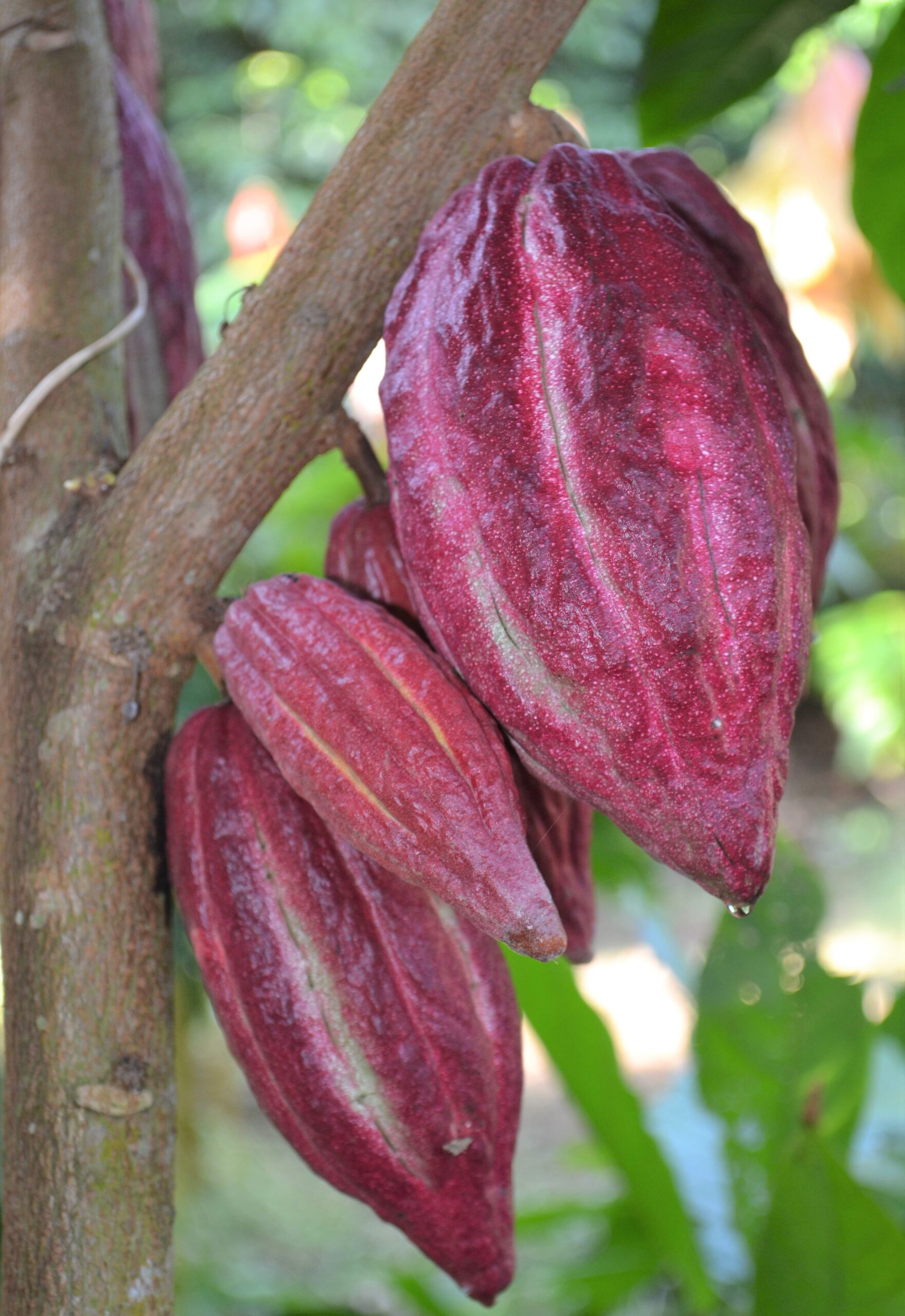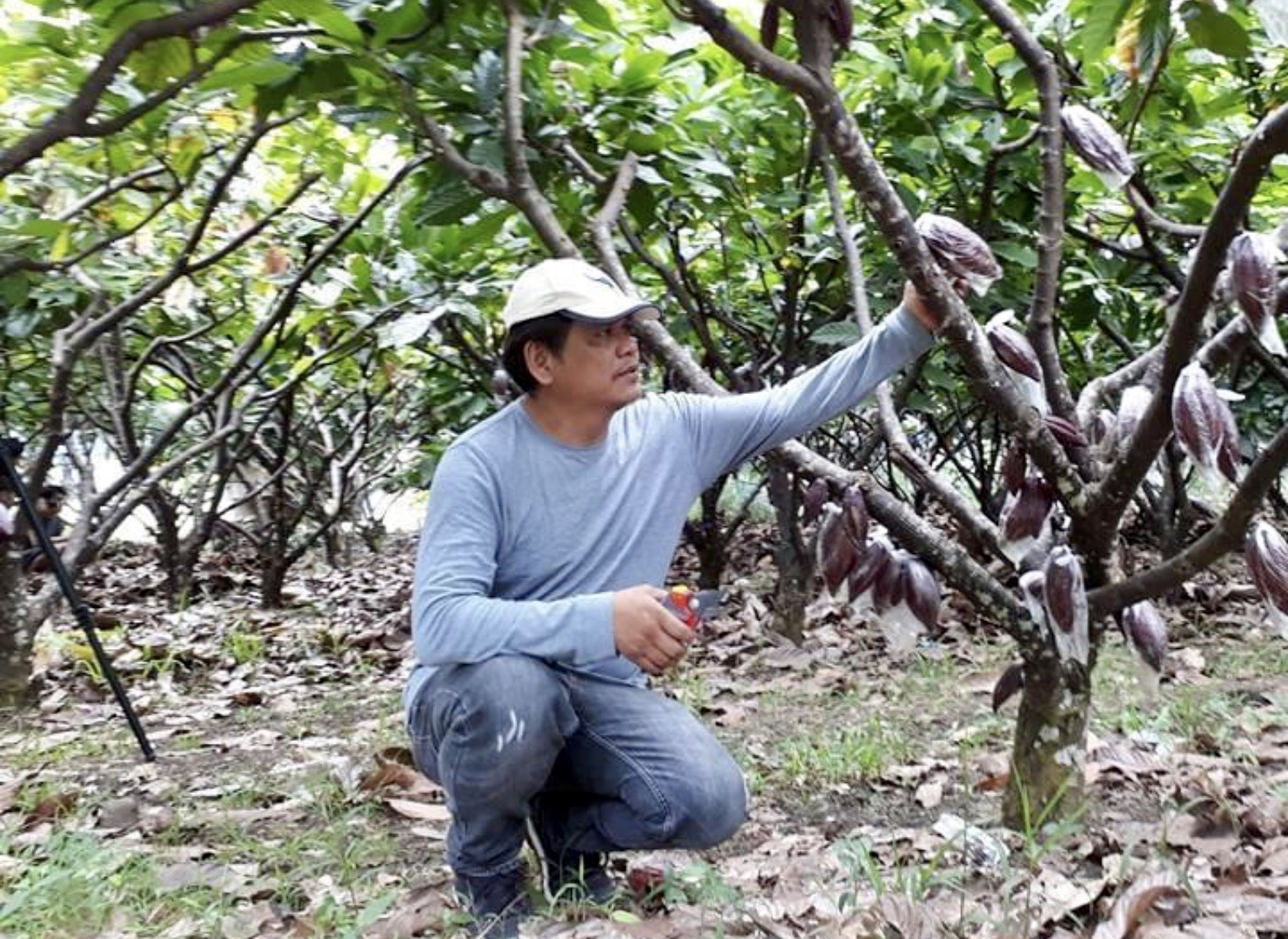Text and Photos by Henrylito D. Tacio
Additional Photo: Val D. Turtur
Val D. Turtur, the first chairperson of the National Cacao Council, never thought of becoming a cacao farmer. But since he was conducting training on cacao growing, he decided to take the challenge.
“Two things prompted me into cacao farming. First, I was asked by one participant during a training which I conducted if I have my own cacao farm. Right there and then, I decided to go myself into cacao farming to avoid the embarrassment of being asked again.”
On the second reason, he said: “I found the potential of cacao not just for production but also for postharvest processing which I am currently doing – the chocolate making.”
It was a decision he never regretted. “I used to grow vegetables in our backyard as a trial but I found vegetables to be highly-perishable crops,” he said. “Thus, I shifted to cacao farming.”
Turtur believed in the saying that you could not share with others what you don’t know. “Practice what you preach,” he explained. “Besides, I was one of the members of the pioneering cacao-based organization in Mindanao.”
He is referring to the Cacao Industry Development Association of Mindanao (CIDAMI), a non-stock, non-profit organization whose members are cacao farmers, nursery operators, cooperatives, traders/exporters, processors, input providers, and academe.
Turtur’s farms are located in Catalunan Grande and in Tamugan, Marilog, both in Davao City. “I first got my knowledge in cacao farming from the technologies provided by ACDI/VOCA and Mars Chocolate,” he said.
ACDI/VOCA is a leading market system practitioner which addresses issues of food security, economic prosperity, and social inclusion through locally-driven market solutions. A program under the United States Department of Agriculture, it was implemented in Davao City at that time and provided technical training and farm inputs to participants.
In addition to those, he also went to Sulawesi, Indonesia, for a learning trip. Indonesia, after all, is the third biggest cacao-producing country. Later on, he attended workshops conducted by international experts and joined international conventions. He also made a field trip to Ecuador, which produces one of the finest cacao beans in the world.
Turtur commenced growing cacao in his farm in 2014. “I started earning income after three years from planting,” he said. “Cacao trees will start to bear fruits in 18 months from planting but it’s only after three years that I started earning.”
During the first cropping season, he harvested an average of 300 grams of dried beans per tree. In the subsequent harvest, he harvested an average of 500 grams of dried beans per tree per year.
“Presently, I am harvesting an average of three kilograms per tree per year or 6 tons of dried beans per year for my 2,000 cacao trees,” he said. “My cacao trees bear fruits every now and then and I harvest every two weeks throughout the year.”
Around 50% of his dried cacao beans are being processed for tablea (a ball of ground-up cacao beans) and chocolate, while the remaining beans are sold to the market.
“We do not sell cacao pods except for experiments and for display only,” he said. “Cacao dried beans are sold to tablea and chocolate makers in Luzon and Visayas.”
Some of the tablea are processed into hot chocolate drinks called sikwate, which he is selling in his sikwate houses in Catalunan Grande and Tamugan.
“Our tablea are sold in retail and wholesale,” he said. “Some bakeries and restaurants in Davao region are getting their supply of tablea from us, which we sold at wholesale price. Balikbayans are also getting their tablea from us. Some customers of our sikwate houses also buy packed-tablea.”
Although Turtur encourages other farmers to go into cacao farming, he said that they need to start with proper training. “Unlike coconut or banana – where farmers can just plant them in their farm and return only when it’s time to harvest – cacao farming is very different,” he explained.
“In cacao farming, I always tell farmers to frequently visit the farm and check the cacao trees,” he said. “The cacao trees will not produce good fruits or pods if they are not well-taken cared of. The old saying, ‘Pag may itinanim, may aanihin,’ does not apply well in cacao.
“In cacao, the saying should go this way: ‘Pag may itinanim, may ipu-pruning, bago may aanihin.’ Pruning is done frequently. It may be laborious, but it is a key to productivity,” he further said.
In the training he conducts, he always shares a Biblical reading about the parable, which highlights pruning. It is written in John 15:2, which stated: “He cuts off every branch in me that bears no fruit, for branches that have fruits, He prunes so that it will be even more fruitful.”
As for those farmers who are already into cacao farming, he suggests that they go into diversification. “That has been our advocacy to farmers – to diversify,” Turtur stressed. “The market is so fragile and demanding; we do not know what it wants now and in the future.
“The advent of global warming and climate change could alter the behavior of pests which can affect the plants and their productivity. Basically, we advocate for coconut/banana-cacao intercropping, considering that Mindanao is practically a coconut- and banana-based farm.
“The coconuts and bananas serve as the partial shades for cacao which during long dry spells the production of cacao will not be hampered,” Turtur went on to say. “For open areas without any coconuts, we encourage farmers to plant banana – be it cardava or lakatan prior to planting cacao.
“Or, they can also plant vegetable crops like eggplant and okra during the early vegetative stage of cacao trees along with bananas. Once cacao trees are already productive, farmers can replace the vegetables with ginger, which can be planted in a sack under the cacao trees.”
As the cacao trees are already fully-grown in his farm, he raises free-range chicken under the trees.
Turtur was once the executive director of CIDAMI. “My job included the promotion and development of the cacao industry initially in Mindanao and eventually in the whole country,” he said. “We conducted investment and technical fora on cacao production and marketing, and long-term training on cacao farming technology.”
He joined the local government of Davao City as officer-in-charge of the City Agriculture Office during the time of Mayor Sara Duterte-Carpio. He worked for only eight months as he returned to serve CIDAMI again for a project.
Eventually, with the help of the Department of Trade and Industry (DTI) and Department of Agriculture (DA), he organized the National Cacao Council, where he became its first chairperson. In that capacity, he organized all regional cacao councils. He resigned from his position in December 2020.
“When we started in the cacao industry as a development worker in 2011, our vision was to see a cacao farmer live a modest lifestyle,” he recalled. “In fairness, there are some cacao farmers who have somehow changed their lifestyle, but there are still many farmers who are struggling to get a slice of the cacao gold.
“I realize that it is not really about the kind of crop you plant, but it is the kind of culture and behavior you apply in raising that crop,” he said. “Farmers who have the patience and discipline to take care of their crops will reap the fruits of their labor, but for farmers who still maintain the culture of farming and not agri-CULTURE will remain poor.”



